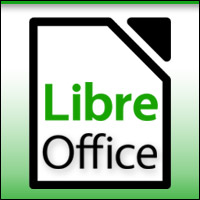
The Document Foundation on Wednesday announced the general availability of LibreOffice 5.3, one of the office suite’s most feature-rich upgrades since 2010, when it forked from OpenOffice at version 3.3.
Dubbed “5.3 Fresh,” this latest release takes the development of LibreOffice in a new direction with a focus on updating the user experience, according to Italo Vignoli of the Document Foundation. The 3.x Family centered on code cleanup, while the 4.x Family focused on code Refactoring.
LibreOffice 5.3 extends the User Interface with an experimental Notebookbar. It also provides a new UI option. The experimental UI offers a choice of two toolbars: the Single Toolbar UI and the Sidebar with a Single Toolbar.
Each UI layout targets a different cluster of LibreOffice users. The new focus should appeal both to early adopters and power users.
Growth Spurt
LibreOffice 5.3 represents the bleeding edge in term of features for open source office suites, according to The Document Foundation.
The growth in LibreOffice’s adoption is the result of The Document Foundation’s ability to grow its developer community, said Michael Meeks, a member of the board, during a teleconference this week.
“In 2010, only a few people were betting on our capability of attracting a large number of code contributors, which are instrumental for the success of a large code base,” he said. “In six years, we have attracted over 1,100 new developers and, thanks to this large community, during the last two years we have had an average of 300 people active on the source code.”
LibreOffice 5.3 is available now for Windows, macOS and Linux, and for the first time also online.
LibreOffice Online for Cloud Servers
With LibreOffice 5.3, The Document Foundation also has introduced LibreOffice Online.
Its primary developer, Collabora, based it on LibreOffice’s desktop core engine.
LibreOffice Online is an enabling technology for the public clouds of ISPs or the private clouds of enterprises and large organizations.
It provides a cloud office suite for basic collaborative editing of documents in a browser. Rendering fidelity is excellent, and interoperability matches that of LibreOffice.
It is not a standalone offering that will compete with Google Docs or Microsoft Office 365, said Vignoli. The Document Foundation is not providing LibreOffice Online binaries.
MUFFIN Sweetens Menu Layouts
The new user interface is code-named “MUFFIN,” for “My User Friendly & Flexible INterface.” The development guidelines emphasize a UI that is easy for beginners to use and powerful for experts.
MUFFIN is based on four key principles:
- Novices can start to work with LibreOffice without needing to read a manual;
- In every situation, the user is confronted with only a few options but can get all options on demand;
- Full access keeps usability first but its use might require some training; and
- Experts will have access to all functionality.
MUFFIN represents a new approach to UI design based on user profile research that assigned differences in user hardware and operating systems, as well as user skills, to categories ranging from basic to advanced operations.
The goal is to provide usability options that respect user needs, rather than impose a single UI for all users. The UI is designed to be independent from the user’s generation, PC hardware or computer skills.
“The sidebar menus are more ideal than the traditional horizontal tool bars for use on non-widescreen laptops,” Vignoli said. “The UI concept may not be incredibly innovative, but it makes sense for a free software office suite. The UI is personal based on users’ habits and their screen size.”
Top New Features
A better text display using HarfBuzz for cross-platform consistency and menu content is unified across the office suite modules for Writer (word processor), Calc (spreadsheet), Impress (slide presentations) and Draw.
Keyboard shortcuts now are displayed in context menus. They are enabled by default on Windows and Linux.
The Area dialog is simplified and includes a new Patterns section for better compatibility with other office software. The result is a better work fit for filled shapes.
Also, you now can import a new custom bitmap image directly from the sidebar. Similarly, you can insert PDFs into documents as images with the first page shown. Even better, you can sign existing PDF files and verify those signatures.
Color palette management also is simplified. New palettes are included for professional graphic and layout work flows.
Other features:
- The help menu has new items, including quick links to user guides and community support forums; and
- A Safe Mode helps you find and fix problems with your user profile or extensions.





















































